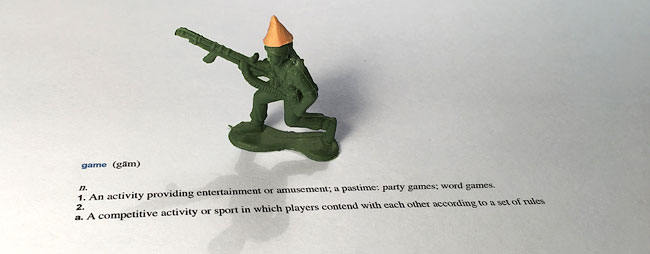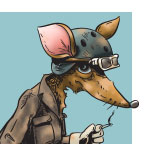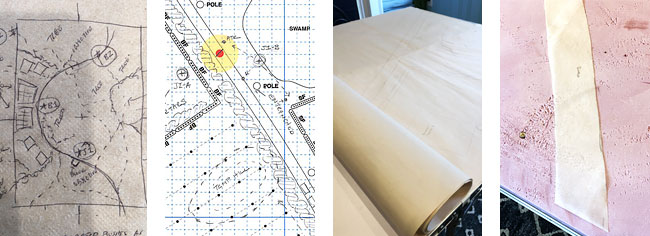

Very often when the Man-Beast and I have an argument…so often…the crux of the dispute involves the meaning of words.
Or the use of words. Now whether or not this is a clever diversion from the subject on the part of Ed, it has occurred to me that while we’ve been writing about designing this game our use of terms has been a bit fuzzy. In prepping my last post about Mock Ups I found myself going back and editing to fix what I was calling things. So lets define some terms and create a vocabulary for discussing these projects. I know it will help us and maybe it will help you.
First, what are we doing?
We are designing a Game
![]()
Game:
A game requires a Rule Set, a Scenario, Forces and a set of Terrain. The Game is a specific combination of those four things for multiple players on two opposing sides. We have also been using the term “convention game” because this seems to denote to folks in the hobby that this game is special and a showpiece bit of work and not something that was rolled up randomly.
Rule Set:
You know, the rules. In this case we are designing for Chain of Command. The Rule Set often defines playing area by setting scale and possibly board size.
Scenario:
This is the situation the players will find themselves in and what they have to accomplish to win or not lose (so not the same thing) the game. It includes the setting, the story of what’s happening, starting places, goals, victory conditions and all those things not dictated by the rule set. It can also define the terrain conditions and layout.
Forces:
These are the tools the players have to accomplish goals set by the scenario and win the game. They include the specific figures, units or weapons each player will position and move around, and any off-board conditions or special rules the players may draw on.
Terrain:
The terrain is where the game will be played. It is composed of different elements that effect how far the Forces can see and move, and may also determine how well protected they are. And looks cool…I hope.
Now let’s consider how we are designing the Game. We begin with an Encounter.
Encounter:
A historic event between military forces. The Encounter provides a model for us to draw on. From the Encounter we get time-period, location and inspiration for Scenario, Forces, and Terrain.

Rough Draft (Map):
Once we have an encounter in mind we start tinkering with sketches of possible maps. This time we literally started on napkins but in the past we have started on graph paper. The rough draft is…well, rough. It’s just a suggestion and a way to discuss possible scenarios, what’s special about the encounter and setting, and how we see players moving forces through the table. We even discuss how players will be influenced by where they have to stand around the table.
Layout:
This is tight drawing of the map we intend to produce. It’s either drawn on graph paper or a grid of some kind so we can translate it into full-size terrain components.
Mock Up:
A full size drawing of the table based on the Layout that can be used as a mat to playtest, and to test position terrain components.
Pattern:
This is a tracing from the Mock Up or other drawing used to transfer a design onto a material being worked into a terrain piece. We haven’t discussed these yet but we will soon.
I think that’s everything that we’ve run into so far. But if more come up I’ll update here.
In my next post, I’ll be talking about Production Management and then we should be into Terrain. Ed, if we can get him to keep posting, will be working on the Forces and Playtesting.